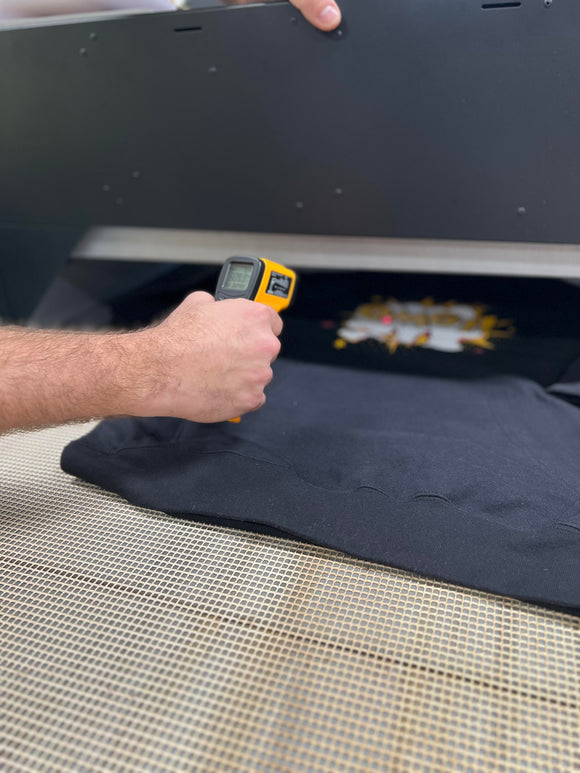Why Shirts Crack, Peel, or Flake After Wash
Ruby Dann
Wash Tests: What happened to my print?
DTG printing poses many challenges; pretreating, getting bright whites and colors on dark garments, correct image location, printing front and back, etc. While this may all seem overwhelming at first, most DTG users will master the skill given enough time. Possibly the truest test of excellence in DTG is reaching the point of consistent wash results.
If pretreatment was applied correctly and your ink settings met the desired printed results, your garments should wash and hold color fantastically well, wash after wash. However, what happens when a client brings back a shirt that was ruined after just one wash?

There could be one of a few reasons for a bad shirt after a wash test.
1)The garment could have a moisture-wicking coating
2)Too much pretreatment was applied
3)The ink was not properly cured
Moisture-wicking – If moisture-wicking components have been applied to the garment, the fabric will resist water-based pigment inks, such as those used in Direct to Garment printing, meaning that you inks will not adhere as anticipated.
Pretreatment Application – If too much pretreat is used, bonding between the fabric, pretreatment, and ink is reduced resulting in poor washability.
Cure Temperature – Curing ink is like cooking; too low of a temperature or too short of a time, and you aren’t done yet. Too high of a temperature or too long under heat, and it will burn. In printing, both of these can result in serious wash issues. Under-cured ink will tend to stick to itself and peel or fall off entirely in the wash. Over-cured ink will most likely crack.
Still Having Wash Test Issues?
For this article, we are primarily talking about FIREBIRD white ink on dark shirts. The proper curing temperature is 330 degrees. If this temperature is not met for the proper time factor, the chemical reaction needed to cure the ink and create the proper bonding does not occur.
Check Heat Press Accuracy
If you are certain you have followed the proper DTG printing procedures and your dark shirts prints are washing out after one (or just a few) washes, the first thing to check your heat press for accurate platen temperature. Although the LCD indicator may read 330 degrees, you can use a digital infrared thermometer to check its accuracy. If the thermometer reads too low or too high, adjust it accordingly.
Parchment Sheets & Teflon Covers
Another potential cause of poor wash results is the style of cover sheet on your press.
For example, parchment paper and Kraft paper can possibly alter the fabric surface temperature a few degrees, which is not nearly enough to affect the curing temperature needed for success. However, Teflon sheets and Teflon platen covers can block as much as 30-40 degrees from reaching the surface of the garment/ink and drastically affect the wash outcome.
If washability of dark garments has become recently problematic, check your heat press or re-think any changes and alterations you may have incorporated like a new top Teflon platen cover. These little changes can make a huge difference in your wash test output and shirt longevity.


